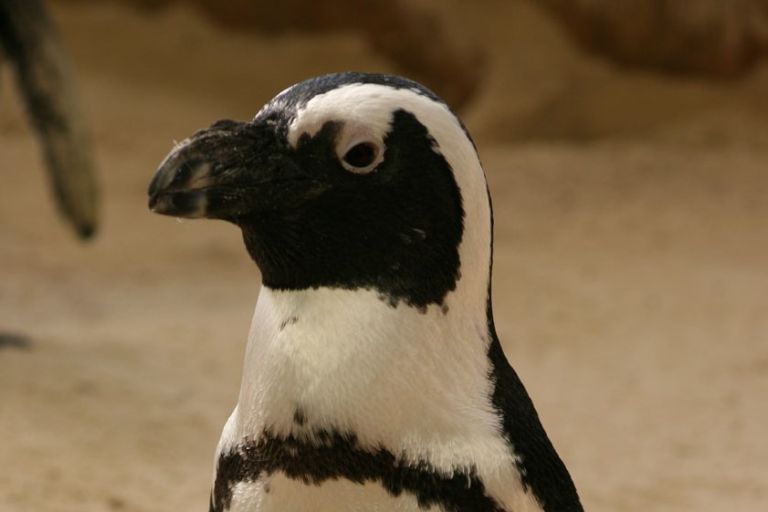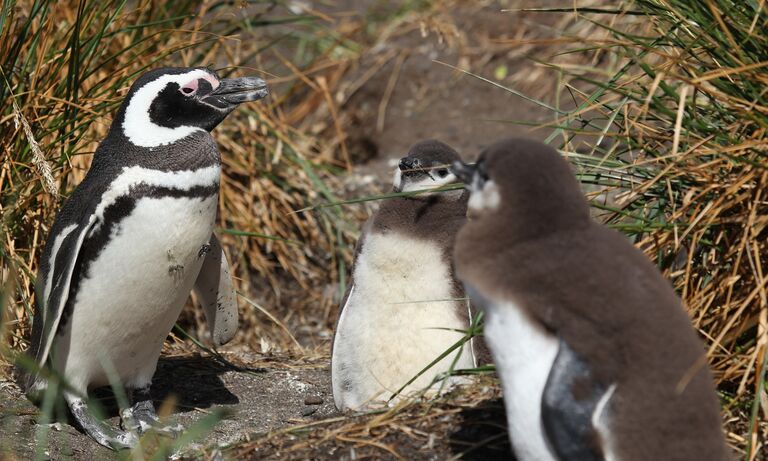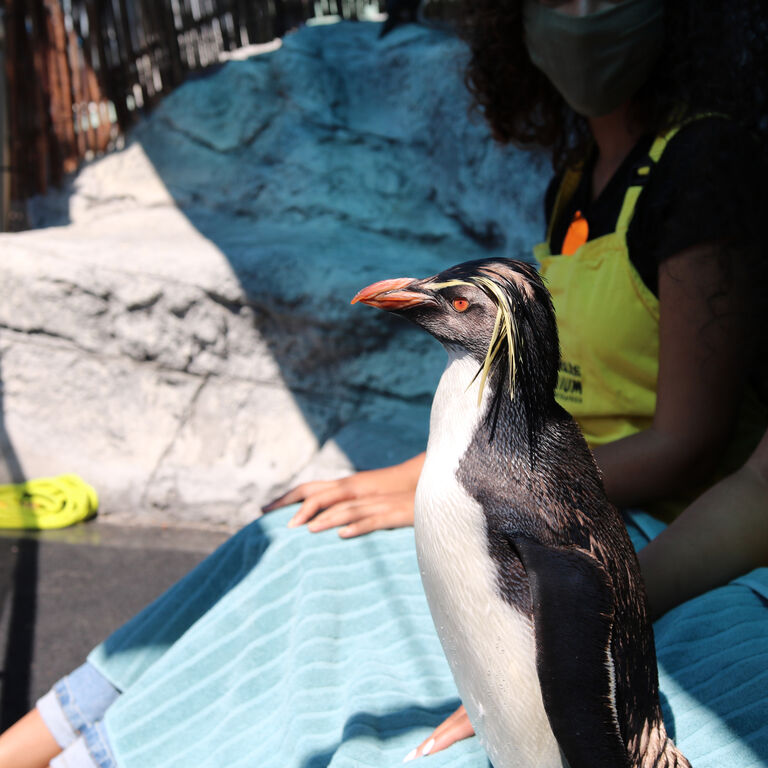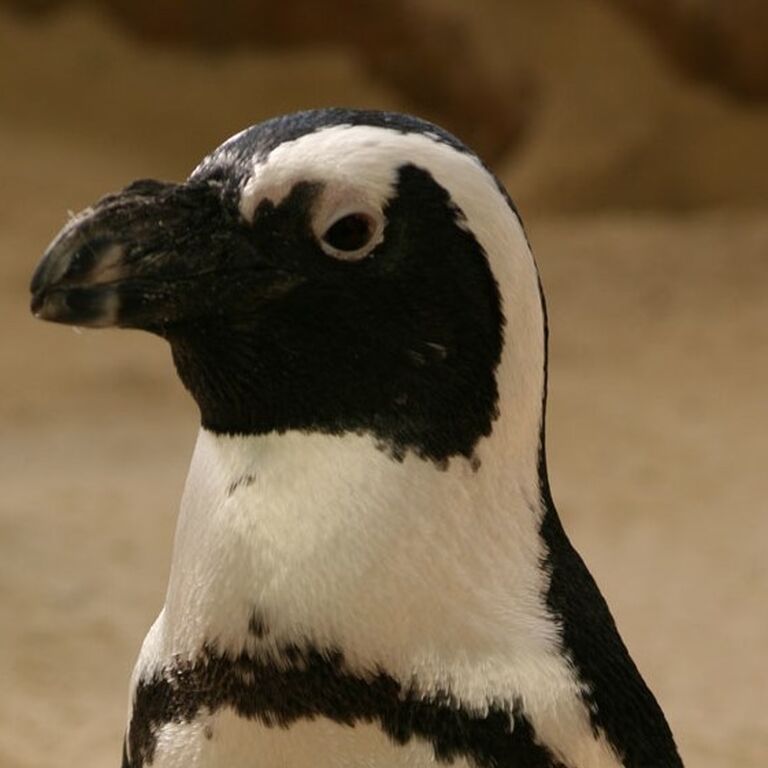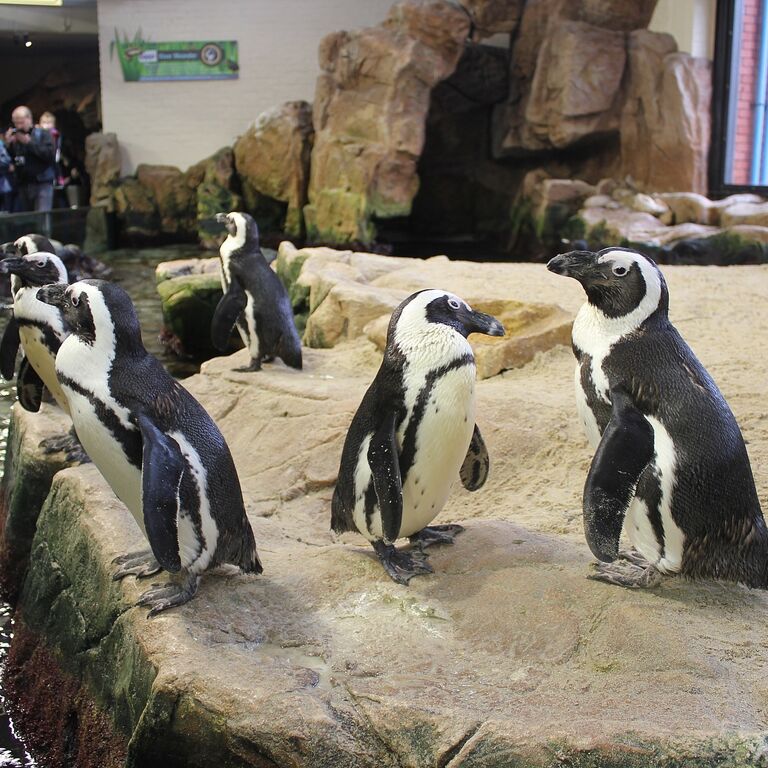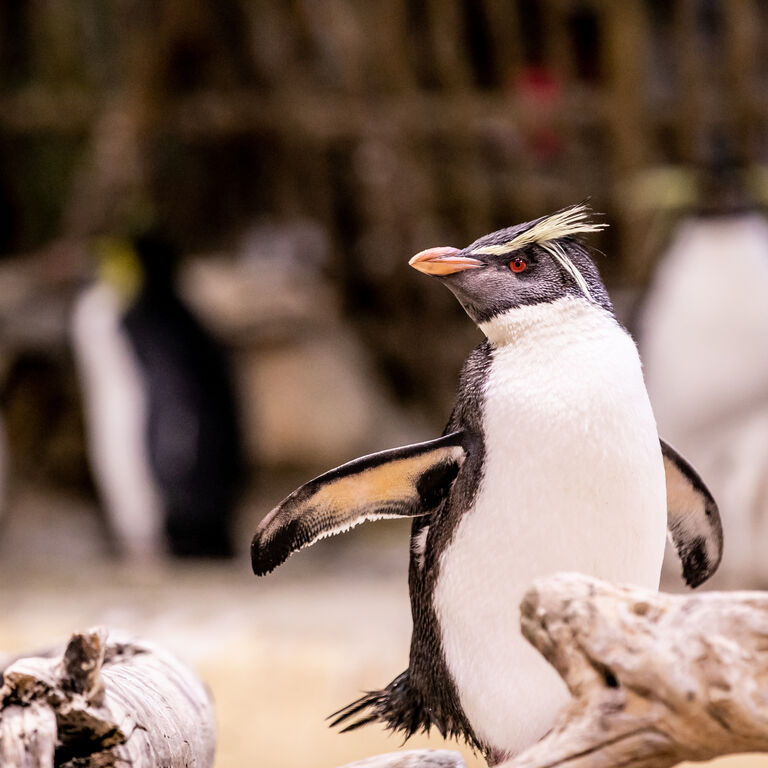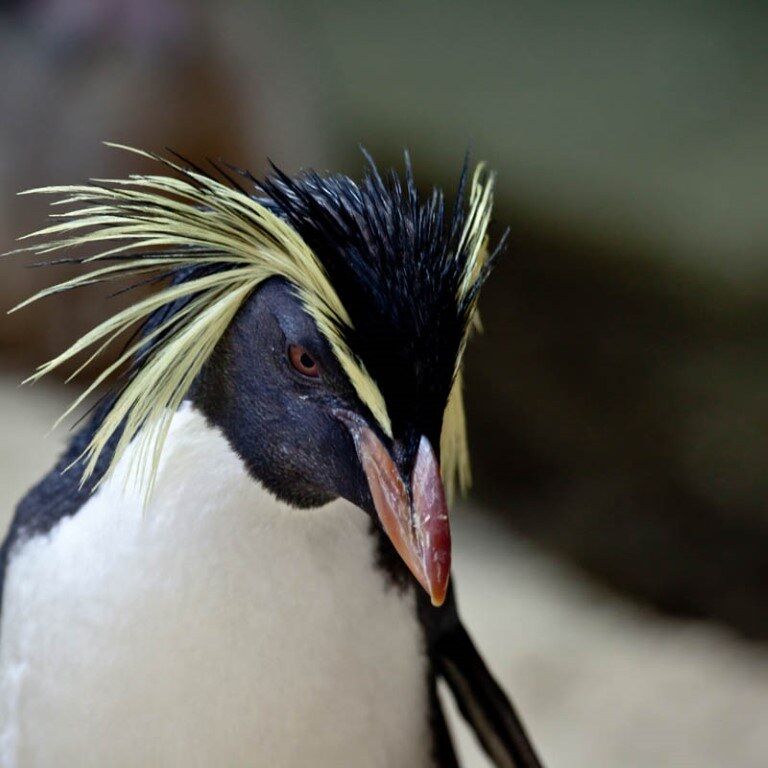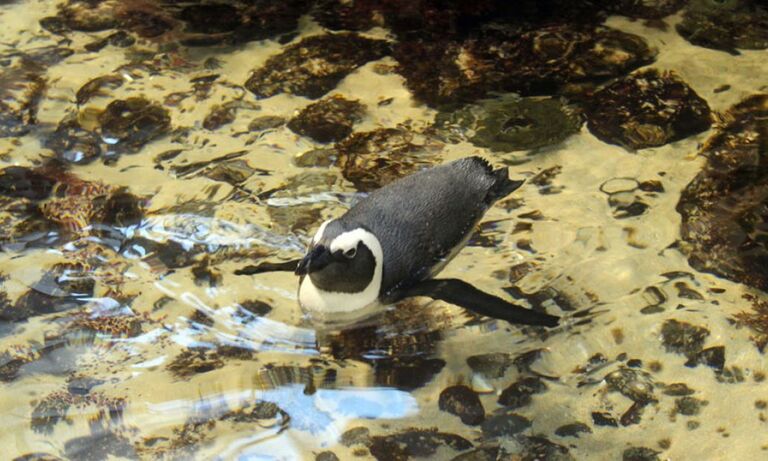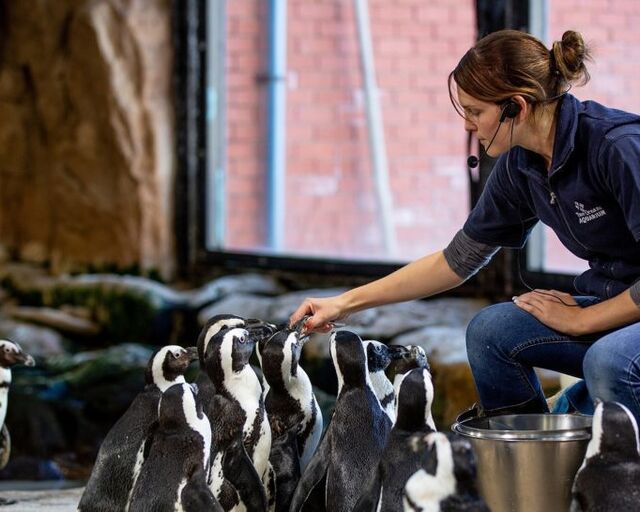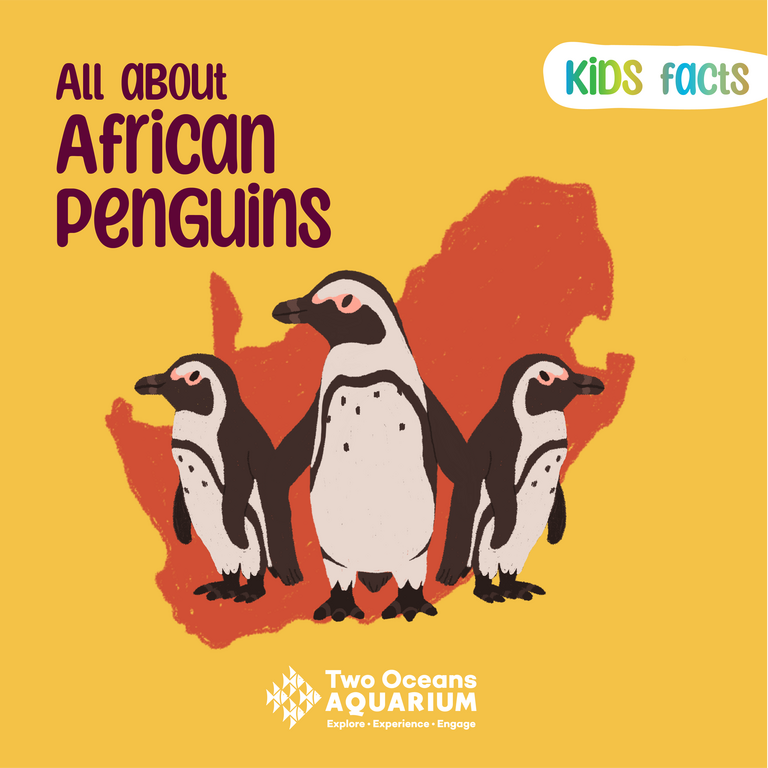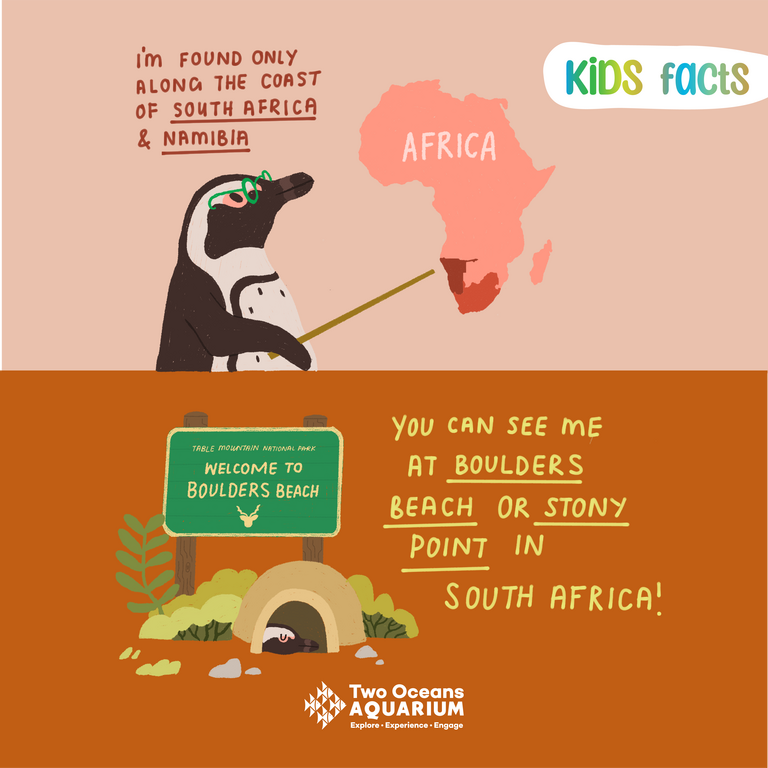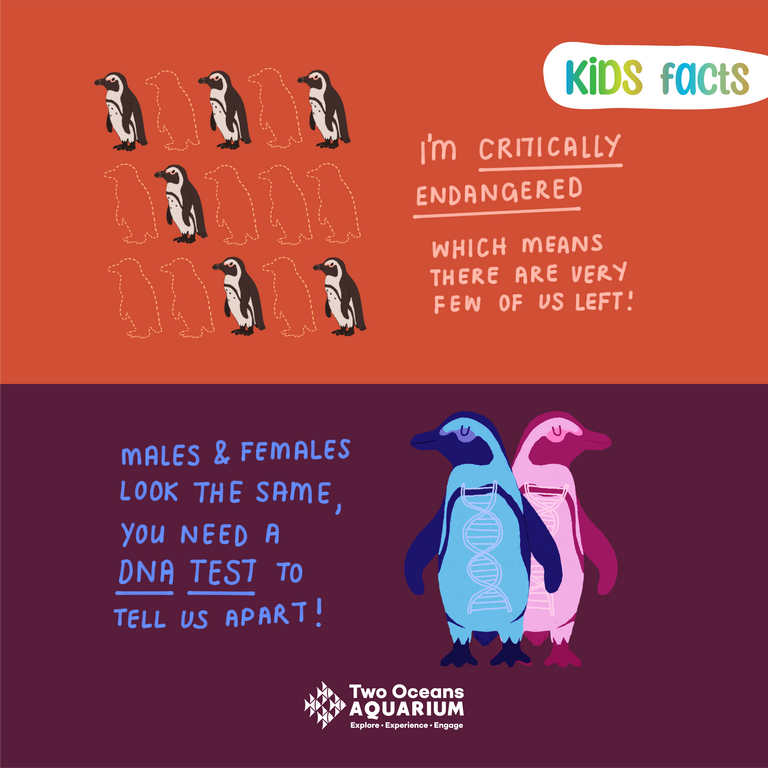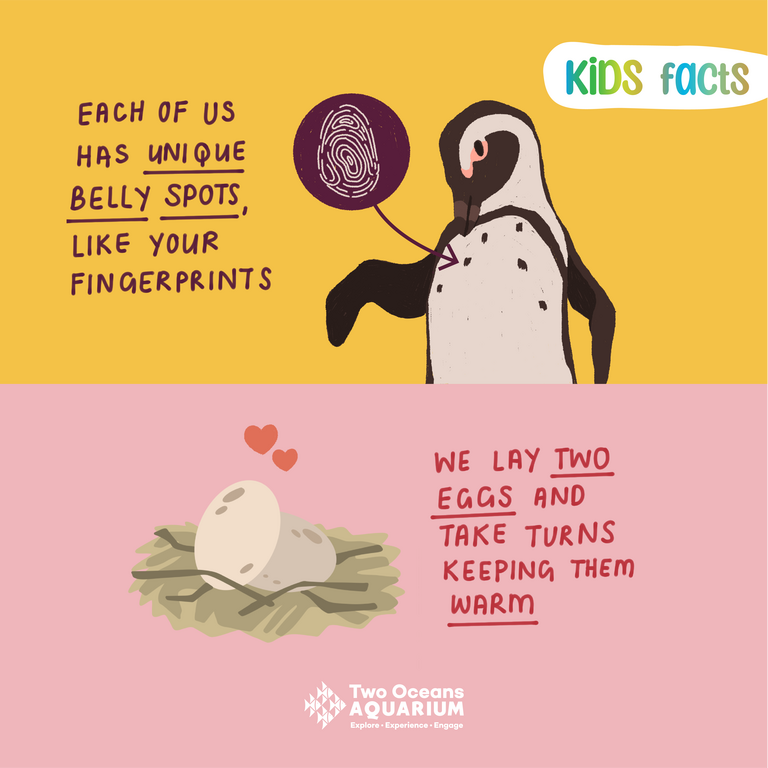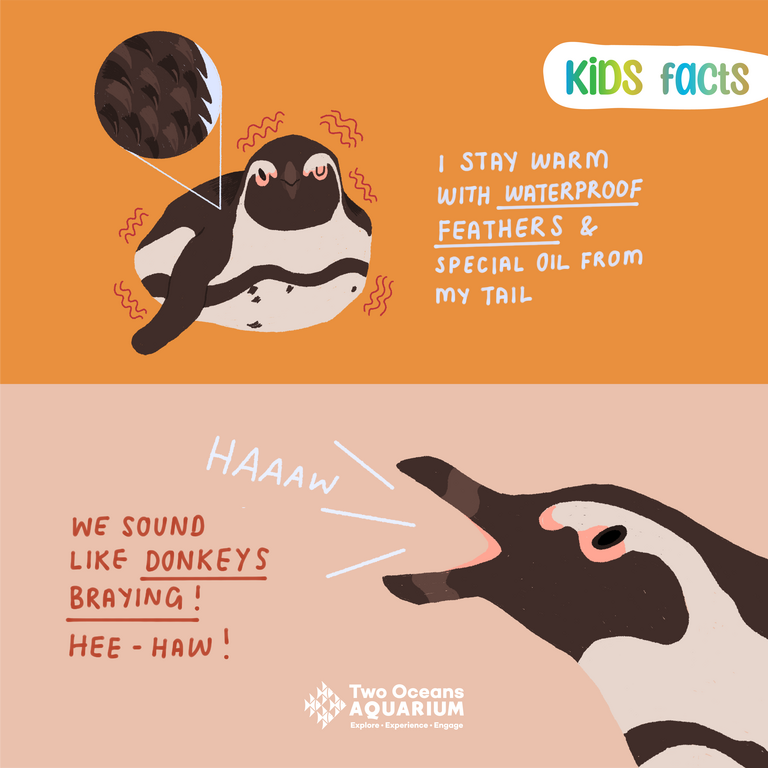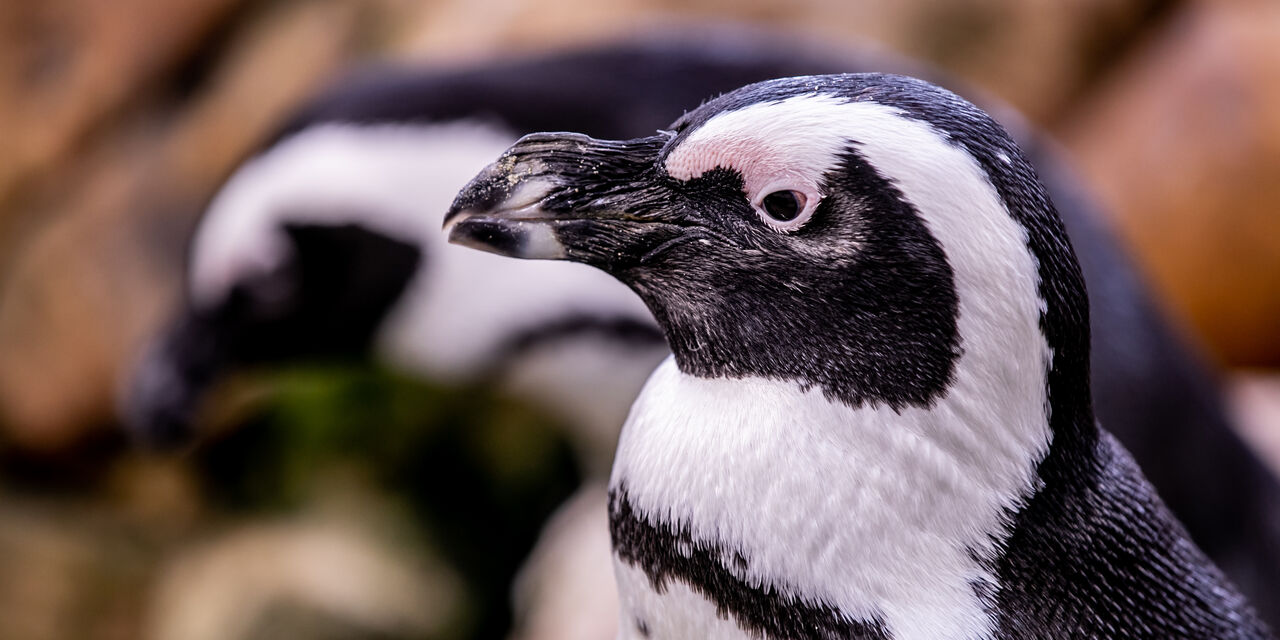
Penguins
Penguins are flightless seabirds that live almost exclusively below the equator. Some penguins, like the African and Northern rockhopper, are found in warmer climates, although most – including emperor, adélie, chinstrap, and gentoo penguins – reside in and around Antarctica. The African penguin is the only species native to Africa and lives only in South Africa and Namibia. Boulders Beach in Simonstown is home to a colony of African penguins. Although there are 18 species of penguin which vary broadly in shape and size, all have black bodies and white bellies. No penguin species can fly, but their stiff flippers, webbed feet and sleek shape make them excellent swimmers. Unfortunately, roughly two-thirds of penguin species are listed as threatened on the IUCN Red List.
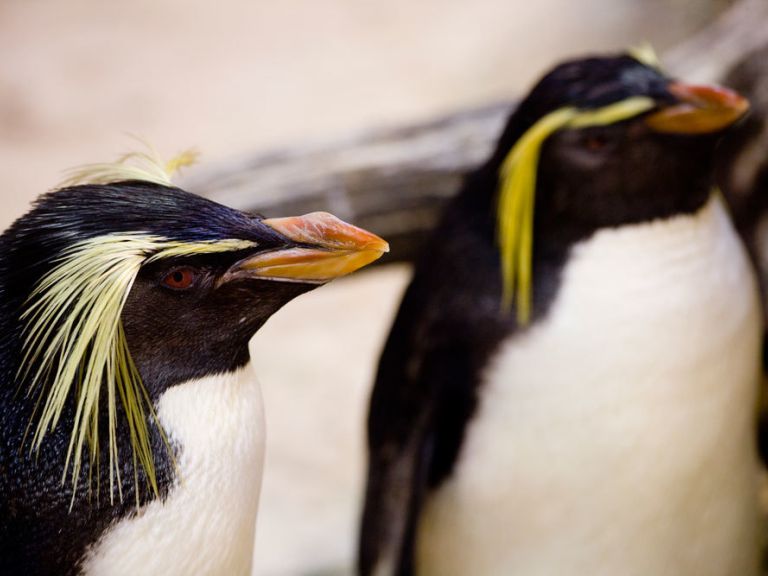
Fun facts about penguins
Penguin Exhibit
#NotOnOurWatch
At their current rate of decline, African penguins will be functionally extinct in the wild within 20 years. Functional extinction occurs when there are such low numbers of penguins that genetic diversity and resilience are impossible, leading to the inability to rebuild the species. By 2035, some colonies which have thrived on the South African coastline for hundreds of years will be no more. African penguins are an indicator species, a sentinel of the health of our ocean ecosystems. The health of the penguin colonies is a direct reflection of the health of their habitat, which in today’s climate is rapidly declining. African penguins are a cornerstone of South African tourism, with the colony in Boulders Beach generating over R300 million in 2018 and benefitting 48 local businesses. Since 1979, when the first count of the major South African colonies was conducted, the breeding population has declined from ~55 200 to ~10 000 breeding pairs in 2022. Without immediate action, a future without African penguins in the wild is certain.
